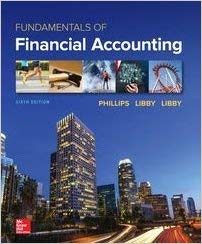Question
You are auditing general cash for a company for the fiscal year ended September 30, 2014. The client has not prepared the September 30 bank
- You are auditing general cash for a company for the fiscal year ended September 30, 2014. The client has not prepared the September 30 bank reconciliation,. After a brief discussion with the owner, you agree to prepare the reconciliation with the assistance from one the companys clerks. You obtain the following information: (30 points)
|
| General Ledger | Bank Statement |
| Beginning balance 9/1/14 | $15,000 | $17,800 |
| Deposits |
| $31,051 |
| Cash receipts journal | $33,330 |
|
| Check cleared |
| (30,309) |
| Cash disbursements journal | ($27,101) |
|
| September bank service charge |
| (150) |
| Note paid directly |
| (8,000) |
| NSF check |
| (950) |
| Ending balance 9/30/14 | $21,229 | $9,442 |
August 30 Bank Reconciliation
Information in General ledger and bank statement
| Balance per bank | $17,800 |
| Deposit in transit | 1,200 |
| Outstanding check | 4,000 |
| Balance per book | $15,000 |
Additional information obtained is as follows:
- Check clearing that were outstanding on August 30 total $3,820
- Check clearing that were recorded in the September disbursement journal total $25,239
- A check for $500 cleared the bank but had not been recorded in the cash disbursements journal. It was for an acquisition for inventory. The company uses the periodic-inventory method.
- A check for $750 was charged to the company but had been written on a different companys bank account.
- Deposit included $1,200 from August and $29,851 for September.
- The bank charged the company account for nonsufficient check totaling $950. The credit manager concluded that customer intentionally closed its account and the owner left the city. The check was turned over to collection agency.
- A note for $7,500, plus interest was paid directly to the bank under an agreement singed five month ago. The note payable was recorded at $ 7,500 on the companys books.
Required:
- Prepared a bank reconciliation that shows both the unadjusted and adjusted balance per books.
- Prepare all adjusting entries
- Below are 3 audit procedures commonly performed during an audit: (20 points)
- Read the clients physical inventory instruction and observe whether they are being followed by those responsible for counting the inventory.
- Compare the clients count of physical inventory at an interim date with the perpetual inventory master file.
- Account for a sequence of raw material requisitions and examine each requisition for an authorized approval.
Required:
- For each procedure, identify which of the following is it:
- Test of control
- Substantive test of transactions.
- For those procedures, identify, what transaction-related audit objective or objectives are being satisfied?
|
|
Procedures |
Type of Test |
Objective(s) |
| 1. | Read the clients physical inventory instruction and observe whether they are being followed by those responsible for counting the inventory |
|
|
| 2. | Compare the clients count of physical inventory at an interim date with the perpetual inventory master file. |
|
|
| 3. | Account for a sequence of raw material requisitions and examine each requisition for an authorized approval. |
|
|
3. Distinguish between Prepayments and Accruals (10 points)
Step by Step Solution
There are 3 Steps involved in it
Step: 1

Get Instant Access to Expert-Tailored Solutions
See step-by-step solutions with expert insights and AI powered tools for academic success
Step: 2

Step: 3

Ace Your Homework with AI
Get the answers you need in no time with our AI-driven, step-by-step assistance
Get Started


